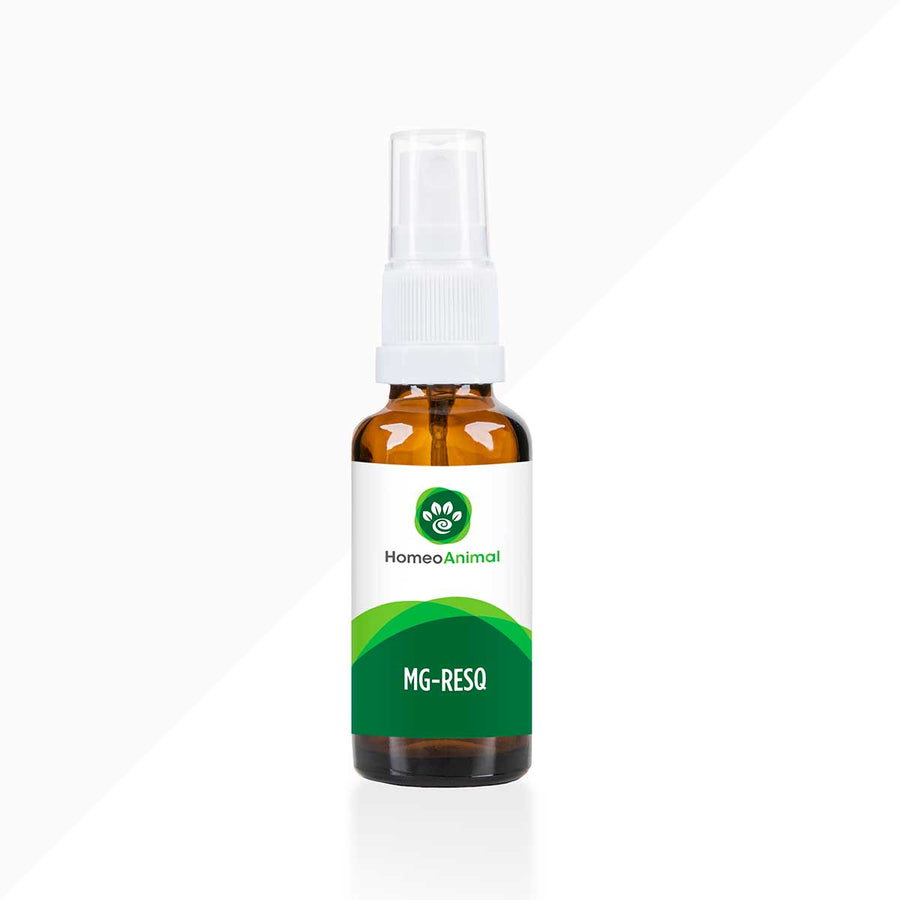Vet-Verified: 4 Effective Home Remedies to Treat Mange in Cats
Is your cat scratching excessively and appearing distressed? If you’ve noticed skin crusts and hair loss in different areas, your feline friend may be dealing with mange. Here’s how to identify and treat this condition using effective ways that can help manage the condition and support your cat's recovery without having to leave your home
This comprehensive guide covers everything you need to know about mange in cats, including its signs, causes, effective home remedies, and expert tips for managing and treating this condition.
What Exactly is Mange in Cats?

Mange is a skin condition that affects various animals, including cats. It occurs when tiny mites infest the skin, causing intense itching, hair loss, skin crusts, and irritation. Although uncommon in cats, early detection and treatment are vital due to their contagious nature and the discomfort it brings.
Mange is a skin condition that occurs when a cat’s body reacts to the presence and activity of mites. These parasites feed on the skin and sebaceous glands, leading to irritation and inflammation. The type of mange depends on the species of mite causing the condition. It can be classified as sarcoptic, demodectic, or notoedric mange.
It’s important to note that mange is highly contagious and can spread easily to other pets in the household. Fortunately, with proper veterinary care and pet homeopathy guidance, effective treatments are available to manage and resolve the condition.
4 Effective Ways to Treat Mange in Cats at Home
Seeking guidance from a veterinarian or pet homeopathy specialist is essential for accurately diagnosing and treating mange in cats. Over-the-counter medications should never be used without professional advice, as some can be harmful or even toxic.
With that in mind, here are some of the most effective natural solutions for cat mange to consider adding to your pet care routine, including:
#1. Cleaning your cat’s ears regularly helps keep unwanted mites away.
Regular ear cleaning is essential for treating and preventing ear mites in cats. It removes debris, wax buildup, and mites, promoting a healthier environment for your pet. For mild cases of mange in cats, natural remedies like olive oil and a 1:3 diluted solution of apple cider vinegar may help soothe the skin and reduce irritation.
Consistent care, with veterinarian-recommended treatments and pet homeopathy guidance, can effectively manage and prevent future infestations.
#2. Isolating the affected cat is crucial.
Isolating an affected cat is crucial to prevent the spread of contagious mange to other pets. Keeping the infested cat in a separate, comfortable space reduces the risk of transmission and allows for focused treatment.
To prevent the spread of mange, it's essential to clean your pet’s bedding by washing it at high temperatures or consider disposing of it entirely. The same applies to your pet’s toys and living areas, as thorough cleaning can help control the spread of mange and support recovery.
#3. Thoroughly cleaning the environment is essential for maintaining a healthy and mite-free space.
Thoroughly cleaning your cat’s environment is essential for eliminating lingering mites and preventing reinfestation. Wash bedding in hot water, vacuum carpets, and disinfect furniture and floors using a pet-safe disinfectant to remove mites, eggs, and debris.
Maintaining a clean environment, combined with proper treatment, promotes your cat’s recovery and supports long-term well-being.
#4. Consider using a high-quality natural product designed to help deal with cat mange.
Zumalka's MG-RESQ is a potent natural remedy to promote your cat's skin health. It is a homeopathic remedy specifically designed for cats with itchy, parasitic skin infections, providing a healthier, more comfortable life.
MG-RESQ is a natural remedy designed to support healthy skin and coat. It helps maintain skin hydration and normal skin function, assisting with occasional dryness, rough patches, and other skin imbalances.
This formula is ideal for supporting skin health in pets experiencing external irritants like mites. By promoting overall skin wellness, MG-RESQ helps contribute to your pet’s comfort and well-being.
By targeting the root of the issue, MG-RESQ promotes improved skin health and overall comfort for your pet.
What are the Different Types of Mange in Cats?

Did you know that mange in cats isn’t a one-size-fits-all condition? Different types of mites can affect cats in various ways and, in some cases, even impact their pet parents. In this section, we’ll explore each type in detail.
Canine scabies (Sarcoptic mange)
Sarcoptic mange, caused by Sarcoptes scabiei var. canis mites, is a highly contagious skin condition that affects both pets and humans. Despite its name, it can spread to cats through contact with infected dogs. Common symptoms include intense itching, hair loss, and sores, making early treatment essential.
Ear mites (Otodectic mange)
Otodectic mange, commonly known as ear mites, is caused by Otodectes cynotis mites and spreads quickly between cats. These parasites infest the ear canal, leading to intense itching, head shaking, and dark wax buildup. Without treatment, they can cause infections and even eardrum damage.
Feline scabies (Notoedric mange)
Feline scabies, or notoedric mange, is a highly contagious skin condition in cats caused by Notoedres cati mites. It leads to severe itching, crusty skin, and hair loss, especially on the ears, head, and face. While rare in humans, prolonged direct contact can cause temporary skin irritation.
Feline demodicosis (Demodectic mange)
Feline demodicosis is a skin condition caused by Demodex cati and Demodex gatoi mites, affecting hair follicles and skin surfaces. D. cati is often linked to underlying illness and may cause localized or widespread hair loss, while D. gatoi is contagious and leads to intense itching, especially on the torso and limbs. In some cases, D. cati infestation can also manifest as chin acne.
Trombiculosis (Chiggers)
Trombiculosis, or chigger infestation, is caused by the larval stage of Trombiculidae mites, which attach to a cat’s skin to feed on blood before dropping off. These tiny, orange mites are commonly found on the head, paws, or belly and can cause itching, redness, and crusty skin. Chigger infestations are seasonal, occurring more frequently in warmer months.
Walking dandruff (Cheyletiellosis)
Walking dandruff, or cheyletiellosis, is a highly contagious skin condition in cats caused by Cheyletiella blakei mites. These white, moving mites create a dandruff-like appearance and can lead to itching, scaling, and miliary dermatitis. They can also spread to other pets and humans, causing temporary skin irritation.
Fur mites (Lynxacariasis)
Fur mites, or lynxacariasis, are caused by Lynxacarus radovskyi mites and are geographically restricted to regions like Australia and parts of the U.S. This infestation gives a cat’s coat a distinctive “salt-and-pepper” appearance and may cause itching and hair loss. While less common than other mite infestations, early detection is key to preventing discomfort and spread.
What are the Signs of Mange in Cats?
There are several types of mange in cats, each causing different clinical signs. Below, we’ll review the most common symptoms and highlight the specific indicators associated with each type of mange:
- Excessive scratching, biting, or licking
- Skin lesions (scaly patches, sores, inflammation, bleeding, rashes)
- Patchy hair loss (alopecia)
- Increased agitation and restlessness
Ear mite-specific signs:
- Head shaking and ear flattening
- Dark ear discharge and wax buildup
Walking dandruff-specific sign:
- Visible, small, white mites moving on the skin
Chigger-specific sign:
- Orange or red oval dots on the skin
Demodex-specific signs:
- D. gatoi: Self-induced hair pulling, especially on the abdomen
- D. cati: Chin acne
In many cases of feline mange, a foul skin odor may also be present, often due to ear mites or secondary infections. However, it's important to remember that these symptoms are not unique to mange—conditions like allergies and flea infestations can cause similar signs.
If you notice these issues, a veterinary or pet homeopathy consultation can help determine the underlying cause and appropriate treatment.
What Causes Mange in Cats and How Does It Spread?

Mange in cats spreads mainly through direct contact with an infected animal, making it highly contagious in households with multiple pets. Though less common, it can also be transmitted indirectly through shared bedding, grooming tools, or contaminated environments.
Canine scabies can be transmitted from infected dogs to cats, while feline scabies (Notoedric mange) spreads rapidly among cats. Ear mites and walking dandruff mites are also highly contagious, easily passing between pets and occasionally affecting humans.
Chiggers are seasonal parasites picked up from outdoor environments rather than through animal-to-animal contact. Unlike most types of mange, Demodex cati is associated with a weakened immune system and is not contagious, while Demodex gatoi can spread between cats.
How Do Veterinarians Diagnose Mange in Cats?
Veterinarians diagnose mange in cats by conducting a thorough physical examination and reviewing the cat’s medical history. A common diagnostic method is skin scraping, where samples are examined under a microscope to check for mites, eggs, or fecal matter.
Tape preparations are used to collect surface mites, while flea combing can help identify walking dandruff mites. For ear mites, veterinarians typically perform an ear examination along with a microscopic analysis of swabs. In some cases, a skin biopsy may be needed to confirm the diagnosis.
If mange is strongly suspected but mites are not detected, a veterinarian may recommend a therapeutic trial with treatment. Blood work may also be performed to identify any underlying health issues, particularly in cases involving Demodex infestations.
Because mites can be difficult to detect, false negative results are possible, so veterinarians also rely on clinical signs to support the diagnosis.
How Do Veterinarians Treat Mange in Cats?
Treating mange in cats should always involve veterinary diagnosis and guidance, as some over-the-counter medications can be harmful. Common treatments include prescription topical medications containing selamectin, moxidectin, fluralaner, or fipronil. In some cases, veterinarians may prescribe oral medications like ivermectin or milbemycin oxime, sometimes used off-label.
Lime sulfur dips are a highly effective topical treatment, typically applied weekly, while medicated shampoos help remove crusts and soothe irritated skin. If secondary infections occur, veterinarians may prescribe antibiotics or antifungal medications, along with anti-inflammatory or anti-itch treatments to provide relief.
All animals in close contact should be treated, even if they show no symptoms, to prevent reinfection. The treatment plan will be tailored to the type of mange and the cat’s overall health for the best results.
Since mange mites have a life cycle that includes egg hatching, multiple treatments may be necessary for complete elimination. Consulting a veterinarian ensures a safe, effective treatment plan tailored to your cat’s needs.
How Can You Manage and Support a Cat’s Recovery from Mange?
Most cats begin to feel relief, with reduced itching, within a week of starting proper mange treatment. However, full skin healing and fur regrowth may take several weeks to months.
Strictly following your veterinarian’s or pet homeopath’s treatment plan and attending follow-up appointments are crucial for a full recovery. To prevent re-infestation, be sure to thoroughly clean your home and your pet’s belongings, as exposure to mites can lead to a recurrence.
How Can You Prevent Mange in Cats?
Proactively caring for your cat can help reduce the risk of mange. Here are some key prevention tips to keep your feline healthy:
- Keep cats indoors to limit exposure to potentially infested animals.
- Use veterinarian-approved preventative flea and tick treatments, as some also protect against certain mites.
- Follow the guidance of your pet homeopathy expert, particularly when it comes to strengthening your cat’s immune system.
- Provide a balanced diet to support a strong immune system and overall skin health.
- Maintain good hygiene by regularly cleaning your cat’s bedding, grooming tools, and living environment.
- Avoid contact with stray or unknown animals, as they may carry mange mites.
Note: Demodex cati mites are naturally present on a cat’s skin, so this type of mange is typically not preventable.
Is Cat Mange Contagious to Humans and Other Pets?
Certain types of mange in cats, including sarcoptic mange, notoedric mange, and walking dandruff, are highly contagious to other pets and may cause temporary itching or rashes in humans.
These mites are zoonotic but typically cannot reproduce on humans, so any irritation is usually temporary and resolves once the affected pet is treated. However, direct contact with an infected animal increases the risk of transmission, making prompt veterinary care essential.
All pets in the household should be treated to prevent the spread and recurrence of mange. Keeping a clean environment, practicing good hygiene, and maintaining regular pet care can also help reduce the risk of human exposure.
If you experience persistent itching or suspect mite bites, it’s best to consult a physician for proper evaluation and guidance.
Can a Cat Die Due to Mange?
Mange in cats is rarely life-threatening, and most cats recover fully with prompt and proper treatment.
However, if left untreated, severe cases—especially in kittens, senior cats, or those with weakened immune systems—can lead to secondary infections, malnutrition, and serious health complications.
If left untreated, severe complications can become life-threatening. Prompt veterinary and pet homeopathic care is crucial to prevent further health issues and support a full recovery. Early diagnosis and treatment not only ease discomfort but also reduce the risk of serious complications.
When Should You Take Your Cat to the Veterinarian?
If your cat has excessive itching, hair loss, or skin issues, scheduling a veterinary visit is important. Self-treating can be risky and may delay proper diagnosis and effective care.
If left untreated, mange can worsen rapidly and spread to other pets. Consulting a veterinarian at the first signs of concern promotes faster recovery and helps prevent complications. Acting early is the best way to keep your cat healthy and comfortable.
Additionally, if you're considering natural remedies, be sure to seek guidance from a qualified pet homeopath to ensure safe and effective care.
A Final Word
Mange in cats is a mite-induced skin condition that causes symptoms like itching, hair loss, and skin irritation. Fortunately, with the right treatment, most cats recover fully and regain their health.
Consulting a veterinarian or pet homeopathy specialist is crucial for an accurate diagnosis and a safe, effective treatment plan. With prompt care, mange can be successfully managed, preventing complications and keeping your cat comfortable.
By following the proper treatment and prevention steps, your cat can recover fully and enjoy a healthy, happy life.
FAQs
How do I know if my cat has mange?
Signs of mange in cats include excessive scratching, hair loss, skin irritation, and scaly patches. If you notice these symptoms, consult a veterinarian or pet homeopathy expert for an accurate diagnosis and effective treatment.
What does a cat with mange look like?
A cat with mange may have hair loss, scaly or crusty skin, redness, and sores. Excessive scratching and skin irritation are common. If you notice these signs, consult a veterinarian or a pet homeopathy expert for diagnosis and treatment.
Is mange contagious between cats?
Yes, some types of mange, like feline scabies and Demodex gatoi, are highly contagious between cats through direct contact. If one cat is infected, all in-contact cats should be treated to prevent the spread.
Can indoor cats get mange?
Yes, indoor cats can get mange through contact with an infected pet, contaminated objects, or mites carried in on clothing. Regular vet checkups, pet homeopath guidance, and preventive care can help minimize the risk.
How long does it take to treat mange in cats?
Mange treatment in cats typically takes several weeks, but full recovery, including skin healing and fur regrowth, may take months. Following the veterinarian’s or pet homeopath's treatment plan is essential for effective results and preventing reinfestation.
What is the best treatment for cat mange?
The best treatment for cat mange includes veterinarian-prescribed topical or oral medications, lime sulfur dips, and medicated shampoos. Treating all in-contact pets and following the full plan is essential. Guidance from a pet homeopathy expert can also be beneficial.
Is there a vaccine for mange in cats?
No, there is no vaccine for mange in cats. Prevention includes regular veterinary checkups, flea and tick treatments, good hygiene, and minimizing contact with infested animals to reduce the risk of infestation.
What is the cost of treating mange in cats?
The cost of treating mange in cats varies based on severity, veterinary fees, and medications. Treatment may range from $50 to $300 or more, including exams, prescriptions, and follow-ups. Early diagnosis helps reduce costs.
How do you get rid of mange on a cat?
To eliminate mange in cats, use veterinarian-prescribed topical or oral medications, lime sulfur dips, and medicated shampoos. Natural alternatives, combined with thorough cleaning and temporarily isolating your cat from other pets, can also help control mange and prevent reinfestation.
Treat all in-contact pets and follow the full treatment plan to ensure complete recovery and prevent re-infestation.
Can humans catch mange from cats?
Yes, humans can temporarily catch certain types of mange from cats, such as feline scabies and walking dandruff, causing itching or rashes. However, these mites cannot reproduce on humans, and symptoms typically disappear once the cat is treated.
Can you tell if a cat has mange?
Yes, signs of mange in cats include excessive scratching, hair loss, scaly or crusty skin, and redness. A veterinarian can confirm the diagnosis through a physical exam and skin tests.
What happens if mange goes untreated in cats?
If left untreated, mange in cats can worsen, leading to severe itching, hair loss, skin infections, and discomfort. In severe cases, it may cause malnutrition and other health complications, especially in kittens or immunocompromised cats.
Is it safe to touch a cat with mange?
It depends on the type of mange. Some, like feline scabies and walking dandruff, are contagious to humans. Always wear gloves when handling an infected cat and seek veterinary guidance for proper care.
What is the fastest way to cure mange?
The fastest way to cure mange in cats is with veterinarian-prescribed topical or oral medications, such as selamectin or ivermectin. Following the full treatment plan and treating all in-contact pets ensures effective recovery.
Can mange go away on its own?
Mange in cats rarely resolves on its own. Without treatment, it can worsen, causing severe itching, infections, and hair loss. Veterinary care and pet homeopathy guidance are crucial for eliminating mites and preventing complications.
What is the best treatment for mites in cats?
The best treatment for mites in cats includes veterinarian-prescribed topical or oral medications, lime sulfur dips, and medicated shampoos. Treating all in-contact pets and following the full treatment plan ensures effective recovery and prevention.
Does fur grow back after mange?
Yes, a cat’s fur typically grows back after mange, but full regrowth can take weeks to months. Proper treatment, good nutrition, and a healthy immune system help speed up the healing process.
What diseases do cats carry to humans?
Cats can transmit diseases to humans, including ringworm, toxoplasmosis, cat scratch disease, and parasites like mites. Proper hygiene, regular veterinary care, pet homeopathy guidance, and parasite prevention are key to reducing the risk of zoonotic infections.
How is mange transmitted?
Mange is transmitted through direct contact with an infected animal or exposure to contaminated bedding, grooming tools, or environments. Some types, like chiggers, can also be picked up from outdoor areas.
How to get rid of cat mites naturally?
To naturally help eliminate cat mites, try vet-approved home remedies like diluted apple cider vinegar, coconut oil, or herbal sprays. Regular grooming, a nutritious diet, and pet homeopathy guidance can also support recovery and prevent reinfestation.
What causes cats to mange?
Mange in cats is caused by various mites, including Sarcoptes, Notoedres, Demodex, and Cheyletiella. These mites spread through direct contact with infected animals or contaminated environments, leading to skin irritation, hair loss, and itching.
How do you stop mange from spreading?
To prevent mange from spreading, isolate the infected cat, treat all in-contact pets, and follow the full veterinary treatment plan. Clean bedding, grooming tools, and living areas regularly to eliminate mites and prevent re-infestation.
Does mange have a smell?
Yes, mange can cause a foul odor, especially if secondary bacterial or yeast infections develop. Infected cats may have irritated, crusty skin with an unpleasant smell. Prompt veterinary care and pet homeopathy guidance help eliminate the odor and underlying issues.







Leave a comment